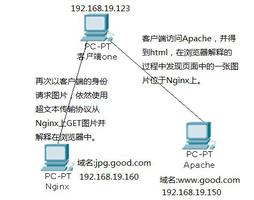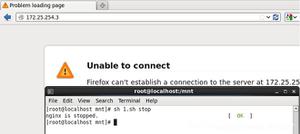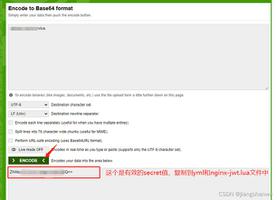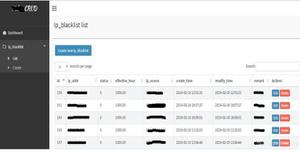AtCoderBeginnerContest104

A - Rated for Me
Time Limit: 2 sec / Memory Limit: 1024 MB
Score : 100100 points
Problem Statement
A programming competition site AtCode regularly holds programming contests.
The next contest on AtCode is called ABC, which is rated for contestants with ratings less than 12001200.
The contest after the ABC is called ARC, which is rated for contestants with ratings less than 28002800.
The contest after the ARC is called AGC, which is rated for all contestants.
Takahashi's rating on AtCode is RR. What is the next contest rated for him?
Constraints
- 0≤R≤42080≤R≤4208
- RR is an integer.
Input
Input is given from Standard Input in the following format:
RROutput
Print the name of the next contest rated for Takahashi (ABC, ARC or AGC).
Sample Input 1 Copy
Copy
1199Sample Output 1 Copy
Copy
ABC11991199 is less than 12001200, so ABC will be rated.
Sample Input 2 Copy
Copy
1200Sample Output 2 Copy
Copy
ARC12001200 is not less than 12001200 and ABC will be unrated, but it is less than 28002800 and ARC will be rated.
Sample Input 3 Copy
Copy
4208Sample Output 3 Copy
Copy
AGC
代码:import java.util.*;publicclass Main {publicstaticvoid main(String[] args) { Scanner in
= new Scanner(System.in);int n = in.nextInt();if(n < 1200)System.out.println("ABC");elseif(n < 2800)System.out.println("ARC");else System.out.println("AGC"); }
}
B - AcCepted
Time Limit: 2 sec / Memory Limit: 1024 MB
Score : 200200 points
Problem Statement
You are given a string SS. Each character of SS is uppercase or lowercase English letter. Determine if SS satisfies all of the following conditions:
- The initial character of SS is an uppercase
A. - There is exactly one occurrence of
Cbetween the third character from the beginning and the second to last character (inclusive). - All letters except the
AandCmentioned above are lowercase.
Constraints
- 4≤|S|≤104≤|S|≤10 (|S||S| is the length of the string SS.)
- Each character of SS is uppercase or lowercase English letter.
Input
Input is given from Standard Input in the following format:
SSOutput
If SS satisfies all of the conditions in the problem statement, print AC; otherwise, print WA.
Sample Input 1 Copy
Copy
AtCoderSample Output 1 Copy
Copy
ACThe first letter is A, the third letter is C and the remaining letters are all lowercase, so all the conditions are satisfied.
Sample Input 2 Copy
Copy
ACoderSample Output 2 Copy
Copy
WAThe second letter should not be C.
Sample Input 3 Copy
Copy
AcycliCSample Output 3 Copy
Copy
WAThe last letter should not be C, either.
Sample Input 4 Copy
Copy
AtCoCoSample Output 4 Copy
Copy
WAThere should not be two or more occurrences of C.
Sample Input 5 Copy
Copy
AtcoderSample Output 5 Copy
Copy
WAThe number of C should not be zero, either.
代码:
import java.util.*;publicclass Main {staticboolean check(String s) {if(s.charAt(0) != 'A')returnfalse;boolean flag = false;for(int i = 1;i < s.length();i ++) {if(s.charAt(i) != 'C') {if(s.charAt(i) >= 'A' && s.charAt(i) <= 'Z')returnfalse; }
elseif(flag || i < 2 || s.length() - i < 2)returnfalse;else flag = true; }
return flag; }
publicstaticvoid main(String[] args) { Scanner in
= new Scanner(System.in); String s
= in.nextLine();if(check(s)) { System.out.println(
"AC"); }
else { System.out.println(
"WA"); }
}
}
C - All Green
Time Limit: 2 sec / Memory Limit: 1024 MB
Score : 300300 points
Problem Statement
A programming competition site AtCode provides algorithmic problems. Each problem is allocated a score based on its difficulty. Currently, for each integer iibetween 11 and DD (inclusive), there are pipi problems with a score of 100i100i points. These p1+…+pDp1+…+pD problems are all of the problems available on AtCode.
A user of AtCode has a value called total score. The total score of a user is the sum of the following two elements:
- Base score: the sum of the scores of all problems solved by the user.
- Perfect bonuses: when a user solves all problems with a score of 100i100i points, he/she earns the perfect bonus of cici points, aside from the base score (1≤i≤D)(1≤i≤D).
Takahashi, who is the new user of AtCode, has not solved any problem. His objective is to have a total score of GG or more points. At least how many problems does he need to solve for this objective?
Constraints
- 1≤D≤101≤D≤10
- 1≤pi≤1001≤pi≤100
- 100≤ci≤106100≤ci≤106
- 100≤G100≤G
- All values in input are integers.
- cici and GG are all multiples of 100100.
- It is possible to have a total score of GG or more points.
Input
Input is given from Standard Input in the following format:
DDGGp1p1c1c1
::
pDpDcDcD
Output
Print the minimum number of problems that needs to be solved in order to have a total score of GG or more points. Note that this objective is always achievable (see Constraints).
Sample Input 1 Copy
Copy
2 7003 500
5 800
Sample Output 1 Copy
Copy
3In this case, there are three problems each with 100100 points and five problems each with 200200 points. The perfect bonus for solving all the 100100-point problems is 500500 points, and the perfect bonus for solving all the 200200-point problems is 800800 points. Takahashi's objective is to have a total score of 700700 points or more.
One way to achieve this objective is to solve four 200200-point problems and earn a base score of 800800 points. However, if we solve three 100100-point problems, we can earn the perfect bonus of 500500 points in addition to the base score of 300300 points, for a total score of 800800 points, and we can achieve the objective with fewer problems.
Sample Input 2 Copy
Copy
2 20003 500
5 800
Sample Output 2 Copy
Copy
7This case is similar to Sample Input 1, but the Takahashi's objective this time is 20002000 points or more. In this case, we inevitably need to solve all five 200200-point problems, and by solving two 100100-point problems additionally we have the total score of 20002000 points.
Sample Input 3 Copy
Copy
2 4003 500
5 800
Sample Output 3 Copy
Copy
2This case is again similar to Sample Input 1, but the Takahashi's objective this time is 400400 points or more. In this case, we only need to solve two 200200-point problems to achieve the objective.
Sample Input 4 Copy
Copy
5 2500020 1000
40 1000
50 1000
30 1000
1 1000
Sample Output 4 Copy
Copy
66There is only one 500500-point problem, but the perfect bonus can be earned even in such a case.
可以dfs遍历所有的情况,直到大于等于所需要的为止。
代码:
#include<iostream>#include
<cstdio>#include
<cstdlib>#include
<cstring>#include
<algorithm>#define Max 100001
#define inf 1000000000000000
usingnamespace std;
struct title {
int p,c,score;
}s[11];
int d,g,ans = 1000;
int vis[11];
void dfs(int sum,int k) {
for(int i = 1;i <= d;i ++) {
if(vis[i])continue;
if(g - sum <= s[i].score) {
int temp;
if(g - sum < s[i].p * i) {
temp = g - sum;
temp = temp / i + (temp % i > 0);
}
else temp = s[i].p;
ans = min(ans,k + temp);
continue;
}
vis[i] = 1;
dfs(sum + s[i].score,k + s[i].p);
vis[i] = 0;
}
}
int main() {
scanf("%d%d",&d,&g);
g /= 100;
for(int i = 1;i <= d;i ++) {
scanf("%d%d",&s[i].p,&s[i].c);
s[i].c /= 100;
s[i].score = s[i].p * i + s[i].c;
}
dfs(0,0);
printf("%d",ans);
}
因为最多十种题目,可以用二进制位存状态,遍历各种情况。
代码:
#include<iostream>#include
<cstdio>#include
<cstdlib>#include
<cstring>#include
<algorithm>#define Max 100001
#define inf 1000000000000000
usingnamespace std;
struct problem {
int p,c,score;
}s[11];
int d,g,ans = 1000;
int main() {
scanf("%d%d",&d,&g);
g /= 100;
for(int i = 1;i <= d;i ++) {
scanf("%d%d",&s[i].p,&s[i].c);
s[i].c /= 100;
s[i].score = s[i].p * i + s[i].c;
}
for(int i = 1;i < 1 << (d + 1);i ++) {
int sum = 0,k = 0,maxn;
for(int j = 1;j <= d;j ++) {
if(i & (1 << j)) {
sum += s[j].score;
k += s[j].p;
}
else maxn = j;
}
if(sum < g) {
int need = (g - sum + maxn - 1) / maxn;
if(need > s[maxn].p)continue;
k += need;
}
ans = min(ans,k);
}
printf("%d",ans);
}
D - We Love ABC
Time Limit: 2 sec / Memory Limit: 1024 MB
Score : 400400 points
Problem Statement
The ABC number of a string TT is the number of triples of integers (i,j,k)(i,j,k) that satisfy all of the following conditions:
- 1≤i<j<k≤|T|1≤i<j<k≤|T| (|T||T| is the length of TT.)
- Ti=Ti=
A(TiTi is the ii-th character of TT from the beginning.) - Tj=Tj=
B - Tk=Tk=
C
For example, when T=T= ABCBC, there are three triples of integers (i,j,k)(i,j,k) that satisfy the conditions: (1,2,3),(1,2,5),(1,4,5)(1,2,3),(1,2,5),(1,4,5). Thus, the ABC number of TT is 33.
You are given a string SS. Each character of SS is A, B, C or ?.
Let QQ be the number of occurrences of ? in SS. We can make 3Q3Q strings by replacing each occurrence of ? in SS with A, B or C. Find the sum of the ABC numbers of all these strings.
This sum can be extremely large, so print the sum modulo 109+7109+7.
Constraints
- 3≤|S|≤1053≤|S|≤105
- Each character of SS is
A,B,Cor?.
Input
Input is given from Standard Input in the following format:
SSOutput
Print the sum of the ABC numbers of all the 3Q3Q strings, modulo 109+7109+7.
Sample Input 1 Copy
Copy
A??CSample Output 1 Copy
Copy
8In this case, Q=2Q=2, and we can make 3Q=93Q=9 strings by by replacing each occurrence of ? with A, B or C. The ABC number of each of these strings is as follows:
AAAC: 00AABC: 22AACC: 00ABAC: 11ABBC: 22ABCC: 22ACAC: 00ACBC: 11ACCC: 00
The sum of these is 0+2+0+1+2+2+0+1+0=80+2+0+1+2+2+0+1+0=8, so we print 88 modulo 109+7109+7, that is, 88.
Sample Input 2 Copy
Copy
ABCBCSample Output 2 Copy
Copy
3When Q=0Q=0, we print the ABC number of SS itself, modulo 109+7109+7. This string is the same as the one given as an example in the problem statement, and its ABC number is 33.
Sample Input 3 Copy
Copy
????C?????B??????A???????Sample Output 3 Copy
Copy
979596887In this case, the sum of the ABC numbers of all the 3Q3Q strings is 22919796129242291979612924, and we should print this number modulo 109+7109+7, that is, 979596887979596887.
动态规划。
#include<iostream>#include
<cstdio>#include
<cstdlib>#include
<cstring>#include
<algorithm>#define Max 100005
usingnamespace std;
typedef longlong LL;
constint Mod = 1000000007;
char s[Max];
LL dp[4][Max];///0 '?' 1 'A' 2 'AB' 3 'ABC'
int a,b;
int main() {
scanf("%s",s + 1);
dp[0][0] = 1;///初始为1
int n = strlen(s + 1);
for(int i = 1;i <= n;i ++) {
for(int j = 0;j <= 3;j ++) {
dp[j][i] = dp[j][i - 1];///加上之前的
if(s[i] == '?')dp[j][i] = (dp[j][i] * 3) % Mod;///如果是问号 有三种选择
if(j && (s[i] == '?' || s[i] - 'A' + 1 == j)) {///如果对应于匹配位置
dp[j][i] = (dp[j][i] + dp[j - 1][i - 1]) % Mod;
}
}
}
printf("%lld",dp[3][n]);
}
以上是 AtCoderBeginnerContest104 的全部内容, 来源链接: utcz.com/z/509467.html








